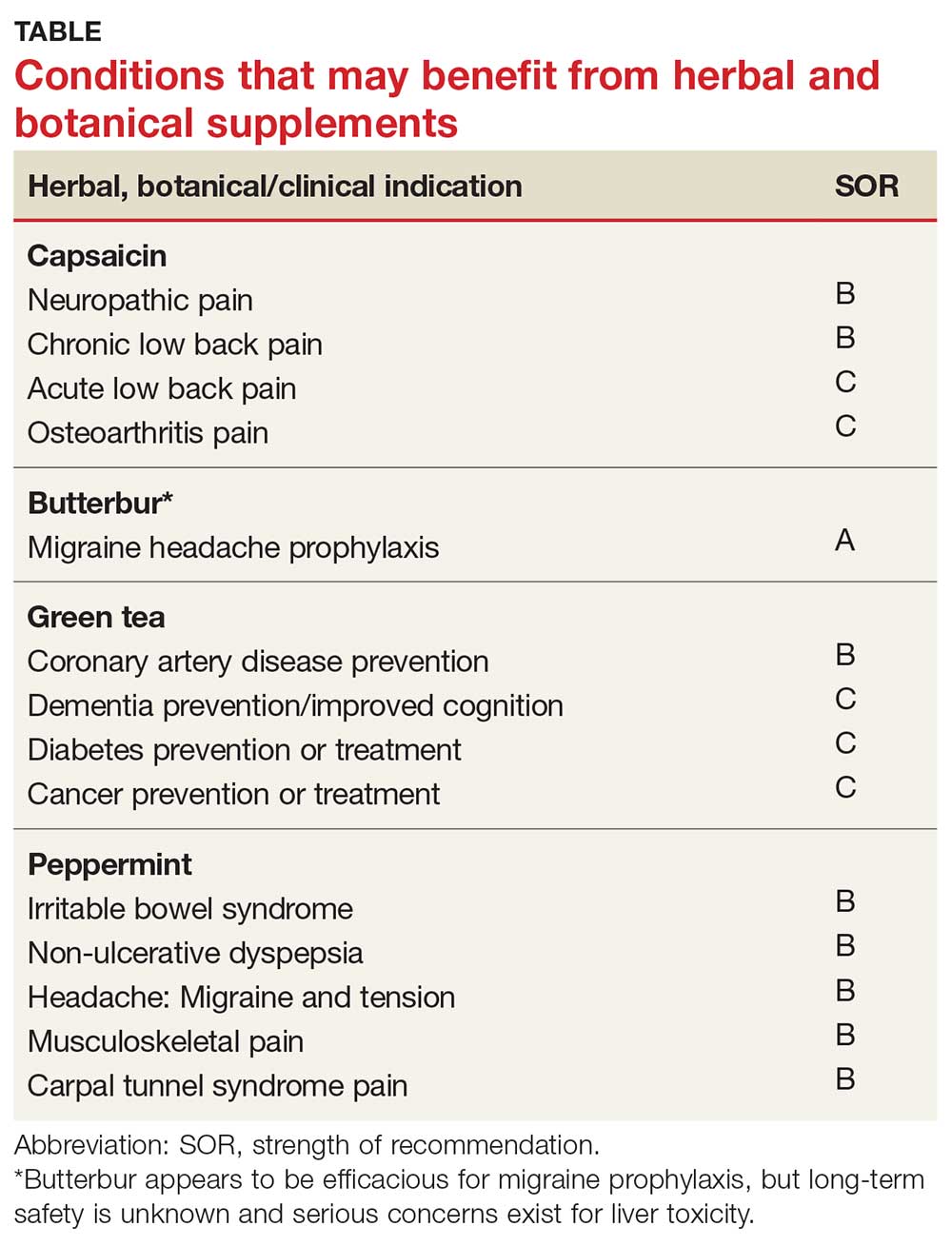1. National Center for Complementary and Integrative Health. The Use of Complementary and Alternative Medicine in the United States. https://nccih.nih.gov/research/statistics/2007/camsurvey_fs1.htm . Accessed April 19, 2018.Expert Rev Neurother. 2011;11:15-27.Drugs Aging. 1995;7:317-328.Cochrane Database Syst Rev. 2013;(2):CD007393.BMJ . 2004;328:991.Clin Ther. 1991; 13:383.J Rheumatol . 1992;19:604.Rheumatology (Oxford). 2011;50:911-920. Cochrane Database Syst Rev. 2013;(5): CD010538.Cochrane Database Syst Rev. 2014;(12): CD004504. Curr Med Res Opin. 2011;27:939-950.Pain . 2013;154:1632-1639.Headache . 2011;51:469-483.Neurol Sci. 2014;35(suppl 1):135-140.Eur Neurol. 2004;51:89-97.Neurology . 2004;63:2240-2244.Headache . 2005;45:196-203.Neurology . 2012;78:1346-1353.http://n.neurology.org/content/78/17/1346 . Accessed April 29, 2018. Curr Opin Otolaryngol Head Neck Surg. 2009;17:226-231.Ann Allergy Asthma Immunol. 2007;99:483-495.Curr Treat Options Neurol. 2016; 18:14. Chin Med. 2010;6:13.Life Sci . 2007;81:519-533.Phytomedicine . 2011;18:691-696. Psychopharmacology (Berl). 2014;231: 3879-3888.Am J Geriatr Psychiatry. 2016;24: 881-889.Nutr Res . 2016;36:220-226.J Am Diet Assoc . 2011; 111:1720-1729.Eur J Epidemiol. 2015;30:103-113. Prev Med. 1997;26:769-775.Am J Clin Nutr. 2013;98(6 suppl): 1676S-1681S.Am J Epidemiol. 2008;167:71-77.Ann Intern Med. 2006; 144:554-562.. Diab Metab J. 2013;37:173-175.BMJ Open. 2014;4:e005632.Am J Clin Nutr. 2013;98:340-348.Eur J Clin Nutr. 2016;70:1340.Clin Med (Lond). 2007;7:224-227.Curr Pharm Biotechnol. 2011;12:68-77. Am J Gastroenterol. 2014;109(suppl 1):S2-S26.Cochrane Database Syst Rev. 2011;(8):CD003460.J Clin Gastroenterol. 2014;48:505-512.Dig Dis Sci. 2016;61:560-571.Phytomedicin e. 2003;10(suppl 4):56-57.Arzneimittelforschung . 1999;49:925-932. Clin Radiol. 2003;58:301-305.Br J Radiol. 1995;68:841-843.Iran J Pharm Res. 2012;11:1073-1077.Front Neurol . 2015;6:11.Int J Clin Pract. 2010; 64:451-456.Nervenarzt . 1996;67:672-681.Aust Fam Physician. 1996;25:216-220.Int J Sports Phys Ther. 2012;7:314-322.J Geriatr Phys Ther. 2013;36:92-99. Rehabil Res Pract. 2014;2014:310913. Int J Toxicol. 2001;20(suppl 3):61-73.Am Fam Physician . 2007;75:1027-1030.Indian J Anaesth. 2012;56:582-584.

